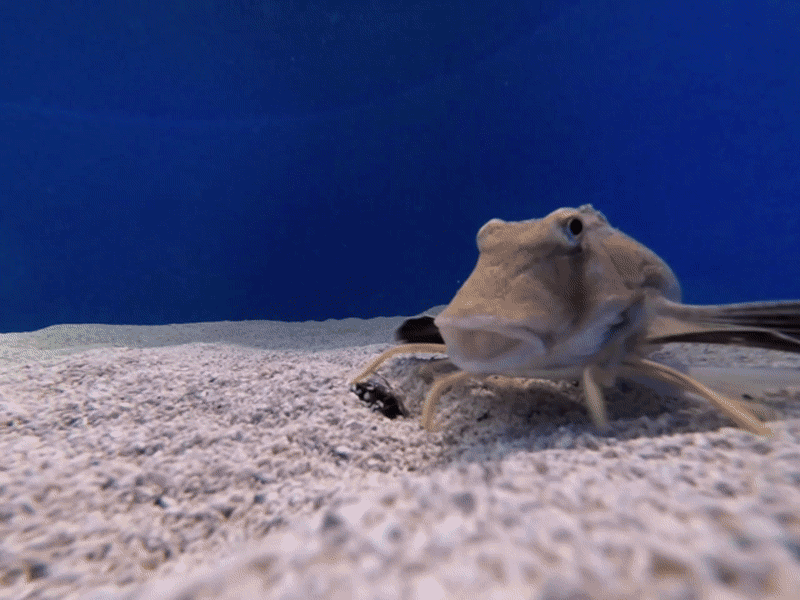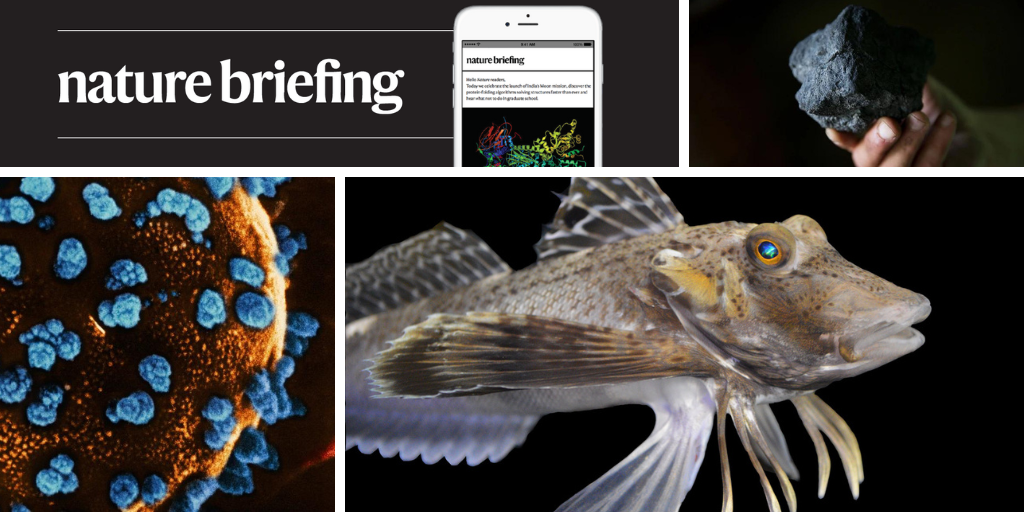Hello Nature readers, would you like to get this Briefing in your inbox free every day? Sign up here.

A northern sea robin (Prionotus carolinus) scurries across the sand on its six legs, which it also uses as shovels and sensory organs.Credit: Anik Grearson
The northern sea robin (Prionotus carolinus) uses its six legs to stroll the ocean bottom and to taste the sea floor for buried prey. It’s “the weirdest, coolest fish I’d ever seen”, says developmental biologist David Kingsley. A detailed study of the unusual appendages has shed more light on how they help make the fish a spectacularly good hunter, and how P. carolinus repurposed its legs as sensory organs — as well as the evolutionary history of legs in the broader sea-robin family (Triglidae).
Reference: Current Biology paper 1 & paper 2
A woman with type 1 diabetes started producing her own insulin less than three months after a transplant of reprogrammed stem cells. This case represents the first successful treatment for the disease using stem cells from the recipient’s own body, which could avoid the need for immunosuppressants. She was injected with the equivalent of 1.5 million stem-cell-derived islets in June 2023. While promising, the woman’s cells must continue to produce insulin for up to five years before considering her ‘cured’, cautions endocrinologist Jay Skyler.
Scientists have observed a single-electron covalent bond between two carbon atoms for the first time. Researchers synthesized a molecule with a stable ‘shell’ of fused carbon rings that stretched out a carbon–carbon bond in its centre. The pull makes it susceptible to losing one electron in an oxidation reaction, leaving the elusive one-electron bond. With the new finding, the team hopes to better understand what defines a chemical bond in the first place. “The covalent bond is one of the most important concepts in chemistry,” says chemist Takuya Shimajiri. “At what point does a bond qualify as covalent, and at what point does it not?”
Reference: Nature paper
The antipsychotic drug KarXT has been approved in the US for treating schizophrenia. It’s the first schizophrenia medication in decades with a new mechanism of action, targeting proteins in the brain called muscarinic receptors, which relay neurotransmitter signals between neurons and other cells. Activating these receptors dampens the release of dopamine, which is involved in hallmark symptoms of schizophrenia such as hallucinations and delusions. “This will be a revolution of the treatment of psychosis, and I’m not saying this lightly,” says psychiatrist Christoph Correll.
Features & opinion
An advanced large-language model pushes against the limits of knowledge and experience in the latest short story for Nature’s Futures series.
Andrew Robinson’s pick of the top five science books to read this week includes an analysis of how our lifestyle choices are affecting the planet, an explainer of the mathematics at the centre of maps and the untold stories of the women who helped shape Egyptology.
Children with Down’s syndrome have a much-increased risk of developing leukaemia — and a study of liver stem cells could help explain why. The extra whole or partial copy of chromosome 21 present in Down’s syndrome changes how DNA is packaged in the nucleus of these cells, opening up areas that are prone to mutation, including those known to be important in leukaemia development. Experts hope this research is an important step to finding kinder treatments for, or ways to prevent, leukaemia in children with Down’s syndrome. “The price [of treatment] is the toxicity and the long-term secondary effects,” says molecular biologist Sébastian Malinge. “Whatever we can find to actually avoid using life-threatening treatments is key in the future of research for leukaemia.”
Nature Podcast | 22 min listen
Subscribe to the Nature Podcast on Apple Podcasts, Spotify or YouTube Music, or use the RSS feed.


